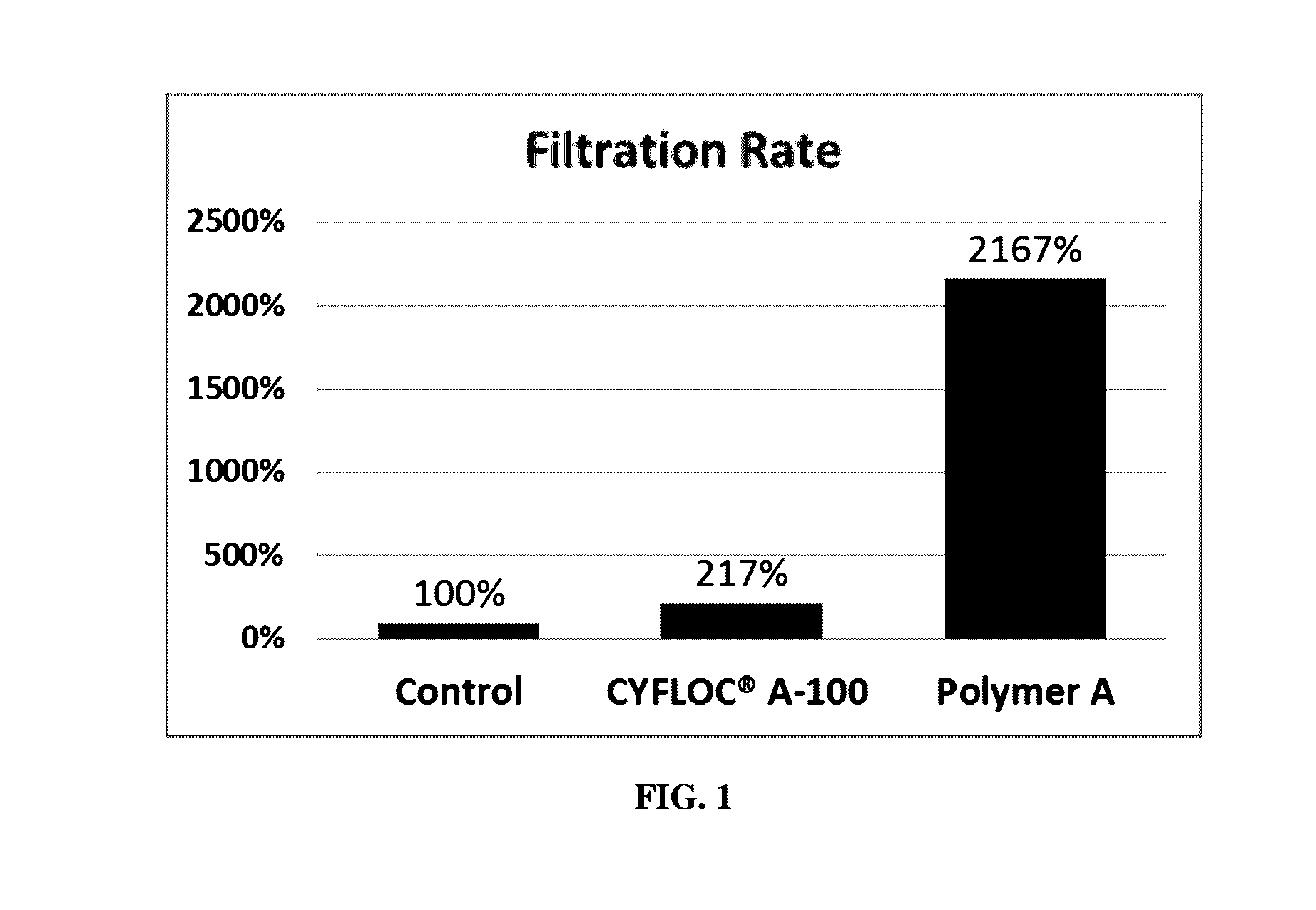Polymeric microparticles as filtration and/or clarifying aids in phosphoric acid production
a technology of phosphoric acid and microparticles, which is applied in the field of phosphoric acid wet process treatment, can solve the problems of significant challenges for the industry, and achieve the effects of improving the clarity of phosphoric acid slurry, enhancing the filtration rate, and increasing the filtration ra
- Summary
- Abstract
- Description
- Claims
- Application Information
AI Technical Summary
Benefits of technology
Problems solved by technology
Method used
Image
Examples
embodiment 1
[0062]A method for enhancing the filtration rate of phosphoric acid produced by the wet process and containing suspended insoluble precipitates, the method comprising:
[0063]adding to the phosphoric acid at any stage of the phosphoric acid production process an effective amount of a reagent comprising polymeric microparticles, wherein said microparticles are characterized as being anionic or amphoteric and have a weight average molecular weight of greater than 60 Million Da; and
[0064]filtering the phosphoric acid, thereby enhancing the filtration rate of the phosphoric acid.
embodiment 2
[0065]A method for clarifying phosphoric acid produced by the wet process and containing suspended insoluble precipitates, the method comprising:
[0066]adding to the phosphoric acid at any stage of the phosphoric acid production process an effective amount of a reagent comprising polymeric microparticles, wherein said microparticles are characterized as being anionic or amphoteric and have a weight average molecular weight of greater than 60 Million Da; and
[0067]separating the phosphoric acid from the insoluble precipitates, thereby clarifying the phosphoric acid.
embodiment 3
[0068]A method for increasing phosphoric acid production obtained from a phosphoric acid slurry produced in a wet process and containing suspended insoluble precipitates, the method comprising:
[0069]adding to the phosphoric acid at any stage of the phosphoric acid production process an effective amount of a reagent comprising polymeric microparticles, wherein said microparticles are characterized as being anionic or amphoteric and have a weight average molecular weight of greater than 60 Million Da; and
[0070]filtering the phosphoric acid, thereby enhancing the filtration rate and throughput of the phosphoric acid.
PUM
| Property | Measurement | Unit |
|---|---|---|
| weight average molecular weight | aaaaa | aaaaa |
| viscosity | aaaaa | aaaaa |
| viscosity | aaaaa | aaaaa |
Abstract
Description
Claims
Application Information
 Login to View More
Login to View More - R&D
- Intellectual Property
- Life Sciences
- Materials
- Tech Scout
- Unparalleled Data Quality
- Higher Quality Content
- 60% Fewer Hallucinations
Browse by: Latest US Patents, China's latest patents, Technical Efficacy Thesaurus, Application Domain, Technology Topic, Popular Technical Reports.
© 2025 PatSnap. All rights reserved.Legal|Privacy policy|Modern Slavery Act Transparency Statement|Sitemap|About US| Contact US: help@patsnap.com

